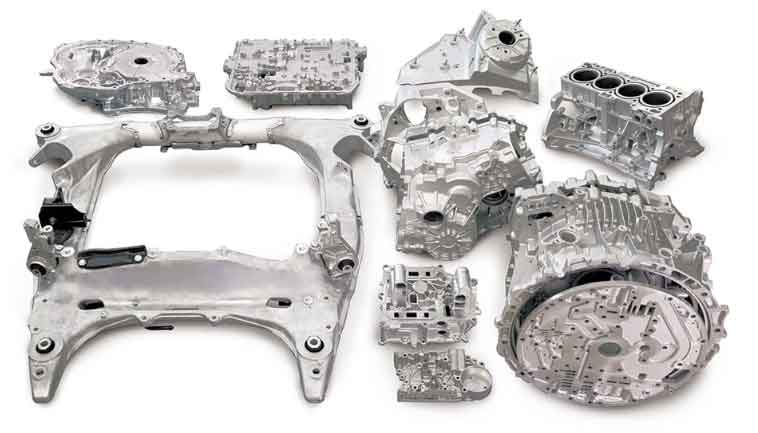
Die casting plays a significant role in the automotive industry, driving innovation and efficiency in the production of various automotive components. The unique characteristics and advantages of die casting make it an ideal manufacturing method for automotive applications. Here are some key factors highlighting the importance of die casting in the automotive industry:
- Lightweight and Fuel Efficiency: Die casting enables the production of lightweight components with high strength-to-weight ratios. Aluminum and magnesium alloys, commonly used in die casting, offer excellent strength and reduce the overall weight of automotive components. Lightweight components contribute to improved fuel efficiency, reduced emissions, and enhanced vehicle performance.
- Complex Geometry and Design Freedom: Die casting allows for the production of components with complex geometries, intricate designs, and precise tolerances. This enables automotive manufacturers to create innovative designs that optimize functionality, performance, and aerodynamics. Components such as engine blocks, transmission housings, intake manifolds, and structural components can be efficiently produced with intricate features using die casting.
- High Production Efficiency: Die casting offers high production efficiency and the ability to produce large volumes of components in a short time. The rapid filling and solidification of molten metal in the die casting process enable faster cycle times and increased production rates, meeting the high-volume demands of the automotive industry.
- Cost-Effectiveness: Die casting is a cost-effective manufacturing method for automotive components. The ability to produce complex shapes and intricate designs in a single operation reduces the need for additional machining, assembly, or post-processing operations, thereby reducing production costs and lead times.
- Consistent Quality and Dimensional Accuracy: Die casting ensures consistent quality and dimensional accuracy across a large volume of components. The precise mold design, tight process control, and advanced monitoring systems in die casting help maintain consistent part dimensions, tolerances, and surface finishes. This consistency is crucial for the reliable and efficient assembly of automotive systems.
- Integration of Multiple Components: Die casting allows for the integration of multiple components into a single complex part. By consolidating several parts into one die-cast component, automotive manufacturers can reduce assembly time, minimize potential points of failure, and improve overall system performance and reliability.
- Corrosion Resistance and Durability: Die-cast components can be engineered with excellent corrosion resistance and durability, ensuring long service life even under harsh automotive operating conditions. Materials such as aluminum alloys and corrosion-resistant zinc alloys are commonly used in die casting for automotive applications.
- Safety and Performance Enhancement: Die-cast components are designed to meet stringent safety and performance requirements in the automotive industry. Components like chassis parts, brake systems, steering components, and safety-critical parts benefit from the high strength, dimensional accuracy, and consistent quality achieved through die casting.
Die casting has revolutionized the production of automotive components, providing automakers with lightweight, high-quality, and cost-effective solutions. The ability to produce complex geometries, optimize designs, and enhance efficiency contributes to innovation and performance improvements in the automotive industry. With ongoing advancements in die casting technology and materials, the role of die casting in automotive manufacturing is expected to continue expanding in the future.
